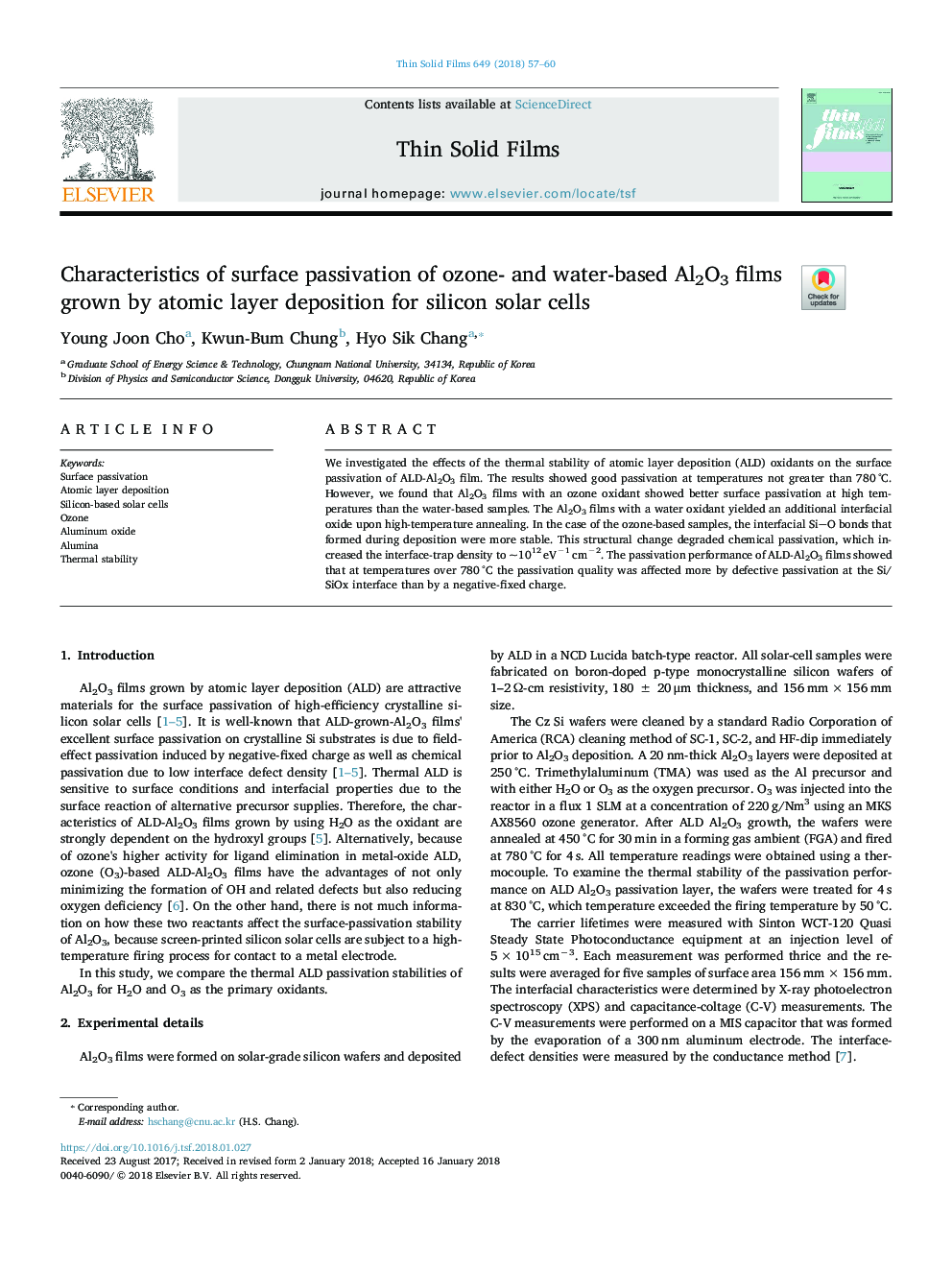| Article ID | Journal | Published Year | Pages | File Type |
|---|---|---|---|---|
| 8032957 | Thin Solid Films | 2018 | 4 Pages |
Abstract
We investigated the effects of the thermal stability of atomic layer deposition (ALD) oxidants on the surface passivation of ALD-Al2O3 film. The results showed good passivation at temperatures not greater than 780â¯Â°C. However, we found that Al2O3 films with an ozone oxidant showed better surface passivation at high temperatures than the water-based samples. The Al2O3 films with a water oxidant yielded an additional interfacial oxide upon high-temperature annealing. In the case of the ozone-based samples, the interfacial SiO bonds that formed during deposition were more stable. This structural change degraded chemical passivation, which increased the interface-trap density to ~1012â¯eVâ1â¯cmâ2. The passivation performance of ALD-Al2O3 films showed that at temperatures over 780â¯Â°C the passivation quality was affected more by defective passivation at the Si/SiOx interface than by a negative-fixed charge.
Related Topics
Physical Sciences and Engineering
Materials Science
Nanotechnology
Authors
Young Joon Cho, Kwun-Bum Chung, Hyo Sik Chang,
